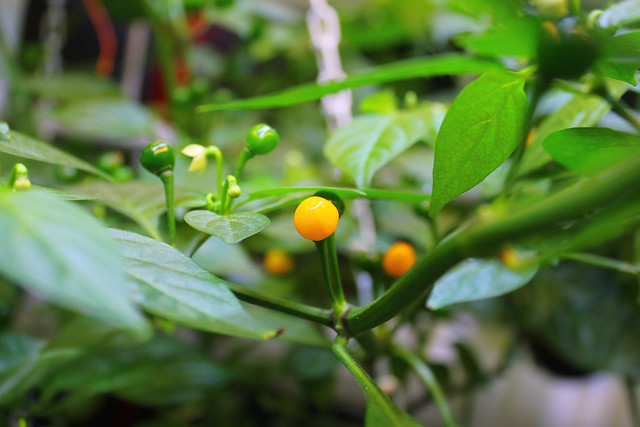
We are having so much fun growing our first Aji Charapita hot pepper plant in outdoor aeroponics this season. From the tiny fragile seedling that was dropping its leaves to this majestic bush full of pods that are now gorgeously turning yellow, we have been falling in love.
 It is so rewarding to see the pods maturing. Called the “mother of all chilis” and known to be the rarest and most exclusive hot pepper in the world, Aji Charapita has a unique fruity flavor and a Scoville heat ranging between 30,000 and 100,000 SHU. Our original seed is 100% pure F1, having been harvested in the peruvian jungle itself.
It is so rewarding to see the pods maturing. Called the “mother of all chilis” and known to be the rarest and most exclusive hot pepper in the world, Aji Charapita has a unique fruity flavor and a Scoville heat ranging between 30,000 and 100,000 SHU. Our original seed is 100% pure F1, having been harvested in the peruvian jungle itself.
Quickly visit us on RakeAround to get them fresh while they last
All summer we gave this special plant the best we possibly could. Natural light, shelter under the greenhouse, good air circulation, high pressure aeroponics with perfect micron mist on the roots and all the way organic Advanced Nutrients feeds. At the end of the outdoor season, we added double layers on the greenhouse walls and Sunblaster orange neons/LED additional lightings.
We recently found out from peruvian friends a little more about all the myths surrounding this amazing plant. The wild Aji Charapita is a very ancestral variety of Capsicum chinense native to the peruvian jungle. Many peppers we know today may have evolved from it thus the name “mother of all chilis”. It needs very delicate conditions like hot springs to survive in winter.
Unfortunalty for it, bad people found out they could use it to increase their profit in the coca extraction. Because of this and its unique flavor, the wild variety started being abusively harvested to the brink of extinction. This is why it became rare and its culture is now forbidden in Latin America.
Learning that fact made us feel sorry that this special plant could go extinct for such a destructive industry. This motivated us to double our effort in order to propagate the plants we take care of right now and share them as much as we can. More people should know its worth and how amazing it tastes. And to preserve the strand we also won’t devaluate it or sell open pollinated seeds. Clones will be available during the winter and spring.
Update:
The plants and aeroponic setup is now back indoor under the sodium light and the mother plant is still full of pods and flowers. We are also happy to announce that JF successfully cloned a dozen babies. With God’s help we may have a solid Aji Charapita winter harvest.




My spouѕe and I stumbleⅾ over here comіng from a dіfferent pagе and thought I may as ѡell
check things out. I like what I see so і am jսst following you.
Look forwaгd to looking at your web page for
a ѕecond timе.